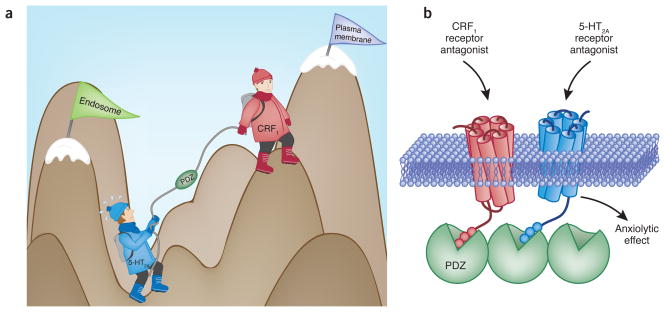Figure 1.
Biochemistry of anxiety. (a) The CRF1 receptor ‘helps’ the 5-HT2A receptor climb up from the endosome to the plasma membrane where its cellular signaling leads to symptoms of anxiety. (b) CRF1 and 5-HT2A receptors are colocalized and form part of a protein complex in individual cortical neurons. Agonist-induced CRF1 receptor internalization is followed by 5-HT2A receptor recycling to the plasma membrane and a higher 5-HT2A receptor–dependent signaling response. The last three amino acids of their PDZ-binding motifs mediate the functional interaction between CRF1 and 5-HT2A receptors. From these findings, it can be hypothesized that the anxiolytic properties of both CRF1 and 5-HT2A receptor antagonists require the expression of cortical CRF1 and 5-HT2A receptors in the same protein complex.

